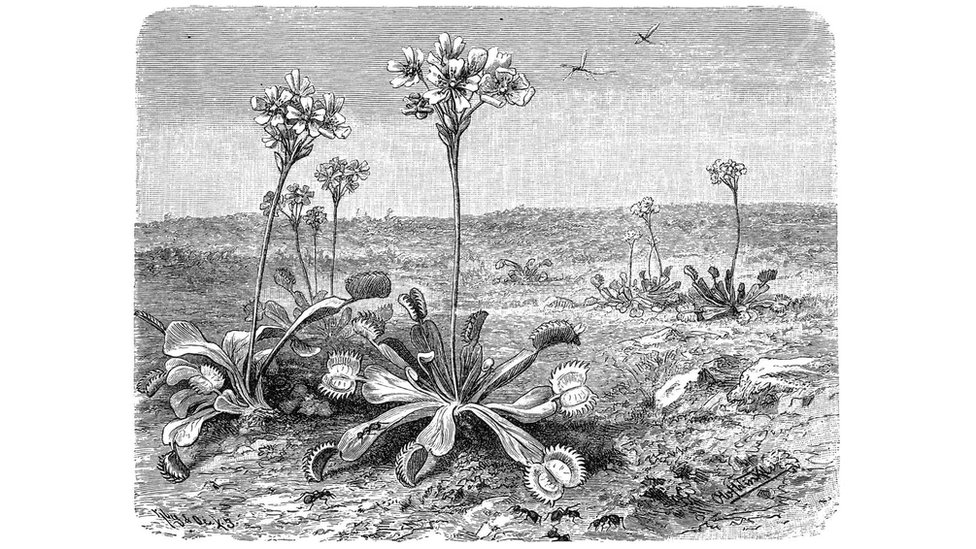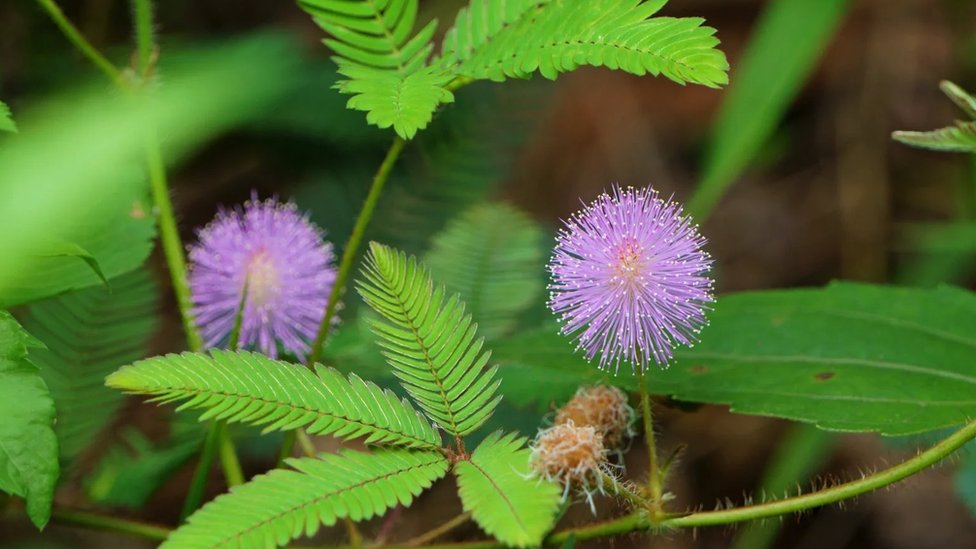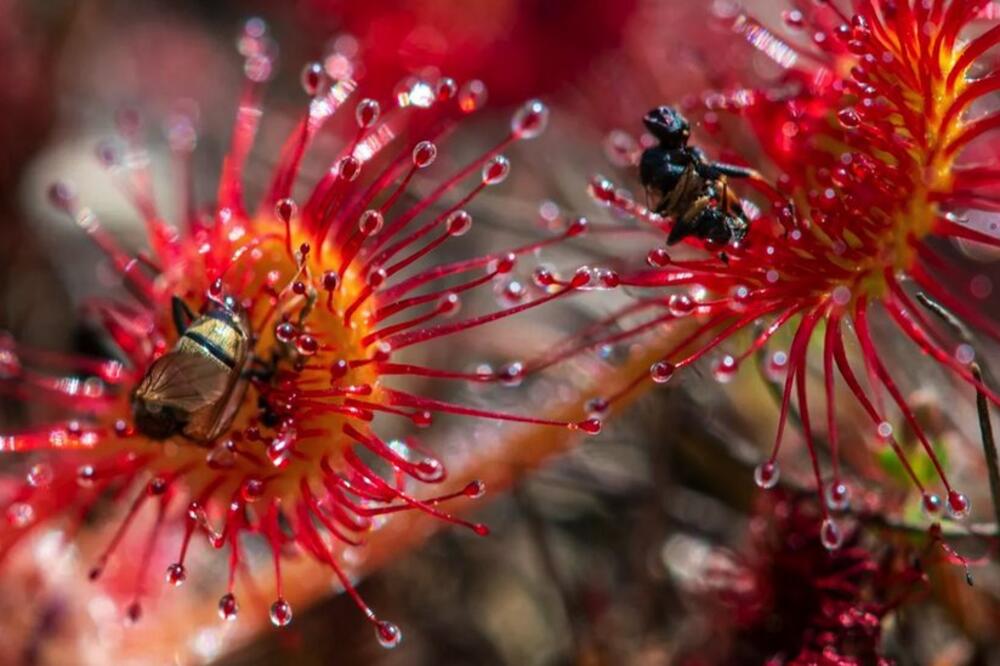Chances are you're familiar with the case of Frankenstein's monster, but have you heard of his garden?
Around the time the scientist who inspired Mary Shelley's Frankenstein was busy electrocuting animals and death row inmates, several of his contemporaries were applying a similar principle to perennials and root vegetables.
And while in the 18th century these attacks were carried out by means of electrical stimulation, with which they allegedly wanted to make the human body more resistant (liberating it from diseases such as paralysis and depression, but also diarrhea and venereal diseases), scientists at the same time worked and on the improvement of plant life.
Experiments with electrified gardens reportedly provided a number of improvements - from more luxuriant flowers to tastier fruit.
It wasn't long before this quest gave way to its cousin, medical electro-quackery, and by the end of the 19th century, science had largely swept away all of those earlier attempts.
More than a hundred years later, better tools and new knowledge have renewed the study of the effects of electricity in biology.
- Darwin's "heinous mystery" - new pieces of the puzzle
- Why it is good to live with plants and take care of them
- Plants disappear twice as fast as animals
Early animal experiments that lasted some 200 years began to take on the contours of real science, leading to promising electrotherapy.
Similarly, the old experiments on plants have become popular again to explore what a more modern approach can bring.
New learning seems to have improved 21st century gardens as well.
The first hints that electric shocks could have a dramatic effect on crops came not as a product of human intervention, but as a result of the influence of nature itself.
After electrical storms, according to old Japanese farming teachings, mushrooms would suddenly begin to multiply.
But man could not quite summon lightning to confirm this experimentally.
Until the 1740s, when various new devices appeared that allowed scientists for the first time to store and apply this still mysterious phenomenon of "electricity".
Soon the application of electricity in irrigation became a hot topic.
Pierre Bertolon de Saint-Lazare, a French physicist and philosopher, who experimented widely with these unsolved mysteries of electricity, collected many experiments on plants of his contemporaries in a collection under the name On the electricity of plants.
In addition to a brighter appearance, flowers reportedly bloomed earlier after electrification, and similarly, electrified fruits ripened faster, which was noticeable by their taste and smell.
But Bertolon first of all focused on the new device he devised - instead of targeting individual fruit trees and vegetables, he was able to inject electricity into entire gardens with the help of a huge device.
He electrified the soil and air that nourished the cultivated plants as if it were electric "fertilizer".
Electro-plant-meter
An elevated system of wire poles that Bertolon installed collected electricity from the atmosphere, conducted it to the ground, and distributed it to the crops.
According to him, the system imitated the stimulation produced by lightning in nature.
Only the effect was better than natural because it emitted smaller, continuous amounts of electricity instead of delivering a single, devastating shock dose.
This type of electric plant meter, he concluded, improved the growth of plants that were under the electric arc, thereby accelerating "germination, growth and production of leaves, flowers, fruits, as well as an increase in yield".
Bertolon used electricity extensively in other forms as well, so he also sprayed insecticides using the basic tool to target infected stems.
His contemporaries used electricity in gardens in other, creative ways.
One of them, for example, watered his own garden with special water, which, as he claimed somewhat suspiciously, was "enriched with electric liquid" in order to replace traditional methods of fertilization.
Not everyone was convinced of these methods.
Things got worse when Jan Ingenhaus, the Dutch-British physiologist who discovered photosynthesis, subjected his own garden to a self-made electro-plant meter that instantly shriveled all the plants.
He concluded that Bertlon's electric fertilizer was - rubbish.
See also this story
Interest in electrocultures has subsided.
A few private manufacturers, lovers of science, continued to carry out small experiments.
In the 1830s, one of them claimed that his experiments showed that plants were exceptional conductors, implying that electricity was a fundamental aspect of their biological properties.
But neither science nor tools were advanced enough to confirm his claims.
After that, if we except a few isolated examples, the idea of electroculture quickly lost support among those who advocated it.
"We cannot help but wonder," wrote two mournful critics in a paper from 1918, looking back on those events, "how is it possible that at a time when the study of electricity was of enormous importance, electroculture remained in Zapečka for more than 150 years".
"The answer probably lies in the stagnation of the science of plant life," the paper concluded with these words.
In other words, to advance electroculture, you first had to understand the electrical framework of plant biology.
Fortunately, by the time this scientific tandem voiced its objections, the first modest seeds of such efforts had begun to fade.
Interest in vegetation and electricity was re-animated by none other than Charles Darwin.
Darwin's carnivorous plants
His grandfather was convinced that electricity could accelerate the growth of plants, but Charles Darwin's argument was based on a much more scientific principle.
He believed that electricity was a fundamental aspect of plant physiology, in the same way that 19th century neurophysiologists were beginning to discover how electrical signals were the foundation of the human nervous system that allowed us to feel and move.
Darwin's original obsession began modestly, with the help of a carnivorous plant from the genus Drosera, better known as the flycatcher.
Barely a year after publication Origin of species, that's all he did.
"At this moment, I am more concerned with fly fishing than with the origin of all species in the world," Darwin wrote in 1860.
That was not at all surprising.
The flycatcher did everything that plants shouldn't do - it ate meat and hunted it.
Her long, sticky arms, with the help of glue-like secretions, were a real trap for captured, unfortunate flies around which those arms would inevitably wrap around, just like in some creepy, sweet roll.

How was that possible?
"Carnivorous plants" were an oxymoron! But the flycatcher was not alone.
Dionaea muscipula (also known as the Venus flytrap) was even more effective.
Darwin enthusiastically described it as a plant whose "leaves catch insects with the speed of a steel mousetrap".
Her reflexes were like those of an animal.
A friend of his, a physiologist and botanist whose expertise spanned both plants and animal life, suggested that these unusual plants be tested for the same "nervous" electrical changes that physiologists at the time identified in animated animal muscles.
They found them.
The published results show that the closing of the flycatcher's mousetrap occurs in accordance with an activity that irresistibly resembles the action potential that defines animal electricity.
Such signals were not reserved only for the animal kingdom.
But even these ideas were mostly rejected by plant physiologists.
It's clear why: carnivorous plants move quickly and hunt like animals, so nerve impulses are a logical outcome.
But other plants do not move or hunt, they just sit and absorb the sun's rays.
It does not make sense for them to systematize the unique attributes of carnivores for the rest of the plant kingdom.
See how a biologist broke the myth that turtles are silent
A few decades later, the Indian engineer and mathematician Jagadis Chandra Bose began to deal with Darwin's question again.
He was particularly interested in Mimosa pudica, a tiny perennial fern.
She doesn't eat meat, but she moves.
When surprised, it collects small fern-like fronds, a stunning tick that has acquired many nicknames over the years, among them names such as the 'sensitive plant' or the 'don't-touch-me' fern.
Bous believed that such rapid movements should also be subsumed under nervous activity, just like animal ones.
In truth, the electrometer discovered the action potential he was looking for in the spikes that flared up just before the leaves folded, just as in the case of the Venus flytrap and its quick closing.
Bouse's curiosity grew stronger - what other plants possessed electrical signals?
In 1901, he reported strong electrical signals in a large number of plants that neither moved nor ate meat, including horseradish and rhubarb.
Over the next few decades, these discoveries included onions, trees, and virtually every member of the plant kingdom that was studied.
- 'Incredible discovery': World's oldest heart found in prehistoric fish
- The return of the exterminated beaver: The charismatic beaver has returned and spread throughout Serbia
- The flora and fauna hidden in the swamps of Serbia
Plants are electric
Until the early 20th century, this remained largely unexplained, until neuroscientific tools revealed that plant cells use electrical charges to regulate internal communication, just as animal cells do.
All living cells have pores in the outer shell and these ensure the survival of different ions on different sides of the membrane.
Mammalian cells have a habit of keeping potassium ions on the inside and sodium ions on the outside.
The result of this balancing is a negative charge inside the cells.
The nervous system uses these small batteries to send all the messages that concern the sensations in the body and communicate with the brain.
Plant cells also have an internal voltage and use it in the same way - to exchange information about the environment.
A study conducted in the late 1990s showed that plants respond to various stimuli, light, temperature, tactile, damaging, with electrical impulses.
This understanding is in line with chemical communication in plants, which leads us to believe that plants can sense danger and seek help by communicating with other plants and animals.
So, for example, corn is able to gather wasps that attack caterpillars that threaten corn.
During the following decades, those concepts that until then were associated with neuroscience, increasingly began to deal with plant physiology as well.

Such discoveries have revived the old debate about the intelligence of plants, which in some circles of plant electrophysiology has been labeled meaningless.
Are plants intelligent?
If so, what does that tell us about our definition of 'intelligent'?
The debate about this is still ongoing, but it is not the only way we can deal with plant electrical impulses.
Some botanists are no stranger to the idea that plants use complicated signals in their mutual communication, as well as in relation to nature.
They are just not the same as ours.
In animals, electrical communication works something like this: nerve cells store potassium in and sodium out, and the electrical differences created by the separated ions fundamentally establish the ion's ability to generate an action potential.
In any case, potassium plays no role in plant action potential because it is toxic to plants.
In their bodies, the roles of sodium and potassium are taken over by potassium, chlorides and calcium.
The electrical impulses that make this possible look different when we look at them a little closer.
One thing is certain - they are stronger.
Then, they also have a slightly wider repertoire of possibilities.
See how Darwin came up with the theory of evolution more than 160 years ago
Aside from the standard action potential, plants also have two additional impulses - 'variational' and 'systemic'.
These impulses regulate different systems.
The action potential is practically similar to that of animals.
Communication is fast at a distance and to interesting stimuli, such as touching or a noticeable change in temperature.
The variational potential, just as the name suggests, is variable, it is activated by stimuli such as cutting, burning or other types of injuries, and the strength of the signal depends on the degree of damage.
It is surface slow and local in nature and is probably related to the state of nutrients.
But plants do not use these impulses to talk to themselves about their internal state, and they could also communicate with each other.
Some believe that the impulses can travel through the network of ubiquitous fungal fibers in the soil and function as a kind of electrical circuit.
This also opens up new questions.
Could we eavesdrop on plants and decipher their electrical impulses?
To find out if they are comfortable, hot or cold?
Do they need more nutrients from the soil? Or maybe they could warn us in time that they are being attacked by different pathogens?
And there's that fatally tempting aspect - maybe we'll find out what our plants are 'thinking' about.
Follow us on Facebook,Twitter i Viber. If you have a topic proposal for us, contact us at bbcnasrpskom@bbc.co.uk
Bonus video:




